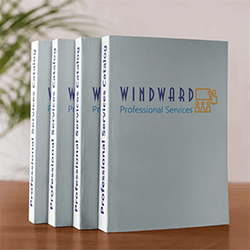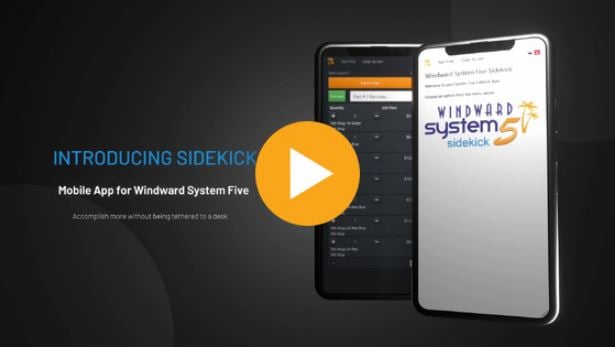Categories in System Five is a major setup component of your business and should be done correctly from the start.
Categories are used for
- Aid in searching for Items
- Define profit areas in reports and on Accounting Reports.
System Five has Main Categories and Sub Categories. Main Categories should be a maximum of about 16, and we recommend a maximum of 16 Sub Categories per Main Category. This recommendation is so that all the Main or Sub Categories will show up on the window at once without having to scroll down.
You do not have to use supplier or manufacture as a category or Main category as most reports can report on the supplier separately. If your business deals with just a handful of brands, then you may wish to use brand as a category.
A good way to imagine categories for your business is to walk into the store and look at your isle signs. For this example we will use a business that every one knows, a grocery store.
First define your Main Categories, write them down each at the top of a blank piece of paper.
Main Categories
- Produce
- Dairy
- Frozen Foods
- Meat
- Cereals
- Beverages
Sub Categories
Next, under each Main Category, write down the names of each Category.
- Produce
□ Vegetables
□ Fruit
- Dairy
□ Milk Eggs
□ Cheese
□ Yogurt
- Frozen Foods
□ Vegetables
□ Prepared Meals
□ Ice Cream
- Meat
□ Turkey
□ Chicken
□ Pork
□ Sandwich
- Cereals
□ Kellogg's
□ Quaker
□ Granola
□ Post
□ General Mills
- Beverages
□ Pop
□ Coffee
□ Tea
□ Hot Chocolate
□ Water
Once you have defined all of your categories and Main Categories you need to come up with a numbering scheme for the Sub Categories. Each sub category requires a three digit number usually starting at 100 and going by 10. In an ideal world this works, but probably not in yours. If you have more that 9 Main Categories or more than 9 Sub Categories per main category you will need a different numbering scheme. Normally each sub categories is separated by 5 or 10 so that you can insert a new category between two others later on, however this is not a requirement.
- Produce 100-199
□ Vegetables 100
□ Fruit 110
- Dairy 200-299
□ Milk 200
□ Eggs 210
□ Cheese 220
□ Yogurt 230
- Frozen Foods 300-399
□ Vegetables 300
□ Prepared Meals 310
□ Ice Cream 320
- Meat 400-499
□ Beef 400
□ Turkey 410
□ Chicken 420
□ Pork 430
□ Sandwich 440
- Cereals 500-599
□ Kellogg's 500
□ Quaker 510
□ Granola 520
□ Post 530
□ General Mills 540
- Beverages 600-699
□ Pop 600
□ Coffee 610
□ Tea 620
□ Hot Chocolate 630
□ Water 640
Usually 900-999 is used for things like
- Misc 900-999
□ Labour 900
□ Shipping 910
If you currently have three levels of categories then you will need to collapse two of the levels into each other. For example:
- Furniture
□ Couches
- Red
- Blue
□ Chairs
- Red
- Blue
becomes
- Furniture
□ Red Couches
□ Blue Couches
□ Red Chairs
□ Blue Chairs
How sub categories correspond to General Ledger Numbers
Each Sub Category has its own Income and Cost of Sales accounts. System Five will automatically assign General Ledger Numbers to each Category, by appending a 4 or 5 to each category name.
Category 100 will post to 4100 for Income and 5100 for Cost of Sales.
Category 110 will post to 4110 for Income and 5110 for Cost of Sales.
This can be changed in the category setup, but be wary of making typing mistakes. You can have Category 100 cost of sales posting to a tax account if you want to, but it would not be recommended. More than one category can be posted to the same ledger number if desired.
Four Digit Categories
System Five it set to 3 digit Sub Categories by default so that each category can correspond to a four digit General Ledger Number. Three digit sub categories mean that you can have a maximum of 1000 categories, 000 to 999.
If you wish to use four digit category numbers, there is an option to turn this on. This however means that you will have to assign the General Ledger Income and Cost of Sales accounts manually. If you do not double up on Ledger Numbers, you will have to change the standard Income, cost of Sales, and expenses from 4000, 5000, 6000 to 4000, 6000, 8000 or such. Four digit sub categories mean that you can have 10000 sub categories 0000 to 9999, however if you have this many sub categories you will have to post more than one category to a ledger number.
We strongly recommend that you do not use four digit categories. We have found that the confusion created, plus the added complexity of manually assigning ledger numbers far exceeds the benefits. Three digit category numbers will allow up to 1000 Sub Categories. This should be more that you would ever need.




